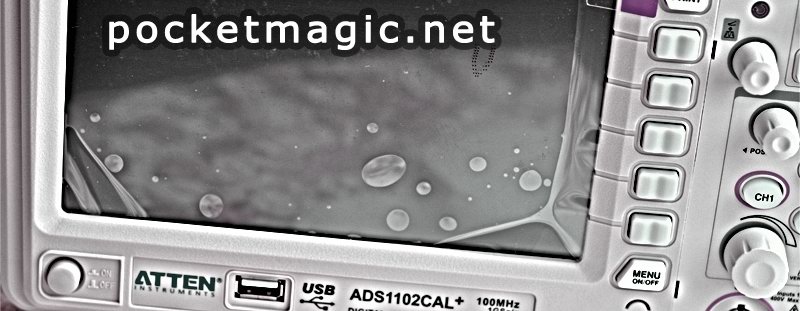
For some time now, the need to have a scope became greater. There were so many projects I could not properly implement, because I didn’t have this tool. Finally I came to decide for a digital oscilloscope.
ATTEN ADS1102CAL vs Rigol DS1052e were the two options left for considering. Both in the same price range, having a slim design and fancy features such as USB connectors for plugging in a USB Flash and snapshoting the traces (I use that a lot!). The former a 100MHz scope with almost zero reviews (at the time of this article) and the latter limited to 50MHz but with a hack available to boost it to 100MHz and with plenty of feedback, posts and articles from the user community.
Not an easy choice, but I opted for the Atten in the end, assuming it will perform at least as good as the Rigol, and that the lack of reviews is not an indication of its quality. Lucky for me, this assumption was correct.
The ADS1102CAL is a great addon to my workbench, and a valuable tool, that allowed me to push my project further. The uRADMonitor would not have been possible without it.
Specs ADS1102CAL:
Color TFT LCD display, waveform display is more clear and stable;
• Rich trigger modes: Edge, Pulse, Video, Slope, Alternate;
• Unique digital filter and waveform recorder;
• Pass / Fail function;
• 32 automatic measurements;
• 2 set of reference waveforms, 20 groups of common waveforms, 20 groups of settings within the store / recall; support waveform, set, CSV and bitmap files U disk external storage and recall;
• Manual, tracking, automatic cursor measurement function;
• channel waveform and FFT waveforms at the same time split-screen display;
• Analog channel waveform mesh screen brightness and brightness adjustable;
• pop-up menu display mode, the user operation more flexible, natural;
• rich interface display style: classic, modern, traditional, simple;
• Multilingual interface display, the English online help system;
• Standard interface: USB Host: Support U disk U disk storage and a system through software upgrades; USB Device: support for PictBridge direct printing and PC connection with the remote control; RS-232.
Technical Specifications:
Bandwidth: 100MHZ
• Channels: Dual Channel + 1 external trigger channel
• The maximum real-time sampling rate: Single 1GSa / S, dual-channel 500MSa / S
• Equivalent Sampling Rate: 50GSa / s
• Memory depth: Single Channel 40K
• Rise time: <.3.5 ns
• Input impedance: 1Mω | | 17pF
• Time base range: 2.5ns/div-50s/div Roll: 100ms-50s/div
• Vertical Sensitivity: 2mv-10v/div (1-2-5 sequence)
• Vertical resolution: 8bit
• Display: TFT 7 è±å¯¸ (178mm) LCD Monitor
Level system
• Real-time sampling rate: 1GSa / s
• Equivalent Sampling Rate: 50GSa / s
• Display Mode: MAIN, WINDOW, WINDOW ZOOM, ROLL, XY
• Time base accuracy: ± 100ppm (any time interval greater than 1ms)
• Horizontal scan range: 2.5nS/DIV - 50S/DIV
• Scan: 100mS/DIV ~ 50S/DIV (1-2.5-5 order)
Here are some inside pics taken by a user on another forum:
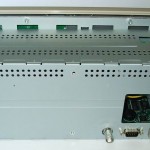
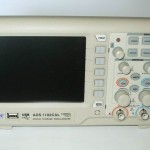
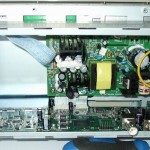
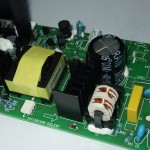
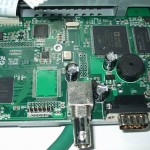
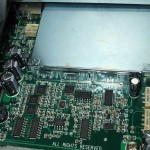
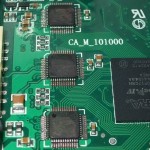
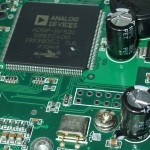
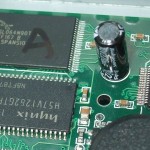
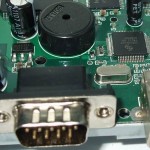
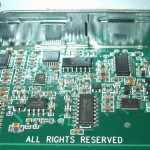
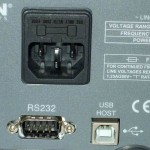
Manual and PC software are available here:
link
Update October 4, 2013
I got a new probe today, very similar in construction to the original two included in the package. I like that they match nicely. The new probe is a high voltage, 100:1 , 100M impedance, rated for 2KV max , that should prove extremely useful when measuring the output voltages of the inverters in my radiation detectors. It is marked as P4100.
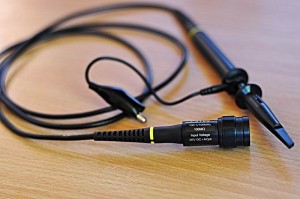
P4100 manufacturer specs:
Bandwidth: 100MHz
Rise time: 3.5ns
Attenuation Ratio: 100:1
Input Resistance: 100M ohm +-2%
Input Capacitance: 6pF
Maximum Input: 2KV Working Voltage(Vp-p)
Compensation Range: 10pF-35pF
Operation Environment: 0-50C, 0-80%RH
Storage Environment: -20 to 60C, 0-90%RH
Size: 110+-2CM
Weight: About 65g
